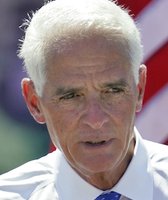Stand up for the facts!
Our only agenda is to publish the truth so you can be an informed participant in democracy.
We need your help.
I would like to contribute
Politics is a numbers game.
In their speeches, debates, interviews and TV ads, the presidential candidates cite a flood of statistics. 47-million uninsured . . . 4,000 killed in Iraq . . . $100 per month.
We've checked more than 420 facts in the first seven months of PolitiFact and have found that checking statistical claims is trickier than we expected.
Our first encounter with a numbers problem came last September when Ron Paul cited the war death toll in a debate. "We've lost over 5,000 Americans over there in Afghanistan, in Iraq, and plus the civilians killed," Paul said.
Turns out the fatality count on that date was actually 4,349 if you include civilian deaths. Does that mean Paul was wrong? Should he get a False on the Truth-O-Meter?
Sign up for PolitiFact texts
No. And our reasoning for that item helps to explain many other statistical claims that we have done since.
First, keep in mind that our goal with the Truth-O-Meter is to give the truth of a claim, but we recognize that truth is not always black and white.
To assess the truth for a numbers claim, the biggest factor is the underlying message. In Paul's case, his point was a simple one, that many people have died in the wars in Iraq and Afghanistan. He overstated the number, but not by all that many.
In a more recent example, Barack Obama said that "I'm the product of a mixed marriage that would have been illegal in 12 states when I was born." His point was that a surprisingly large number of states had such laws just a short time ago.
Turns out he was significantly understating the number. It was actually 22, we found.
We decided to rate his statement Mostly True. Although his number was actually pretty far off, the number was not as important as his underlying point, which was accurate. We headlined the item "Obama's more right than he knows."














































